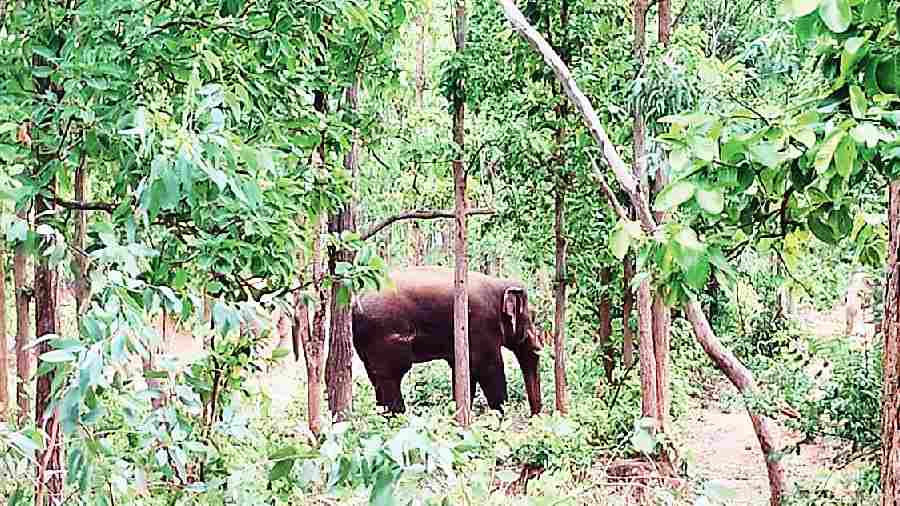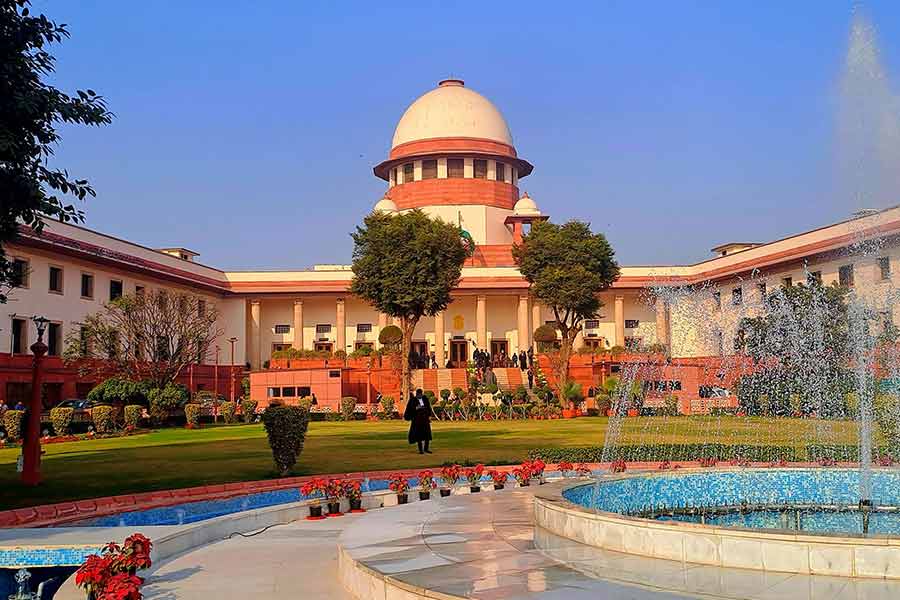A wild female elephant that was separated from its herd with its calf on Wednesday night killed three persons and injured at least one at two spots in Jhargram, prompting local people to block a road for around seven hours on Thursday to protest against frequent threats posed to their lives and livelihood by the animal.
Bhushan Mahata (25) and Rameswhar Baske (65) were the first targets when the duo suddenly came across the female elephant near Kanyadoba village, adjacent to Jhargram town.
Local people tried their best to save Mahata and Baske but the mother elephant repeatedly lifted and hit them on the ground with the trunk.The elephant, along with its calf, later entered Jhargram town’s ward 16 and killed Devi Mondal (45) in the same manner. All the three were declared brought-dead at Jhargram district hospital.Mahata and Baske, both marginal farmers, were residents of Kanyadoba village adjacent to Jhargram town and Mondal, a homemaker of ward 16.
The villagers of Dubrajpur of Jhargram on Thursday blocked Jhargram-Jamboni road for over seven hours starting from 9am in protest against the increasing trend of elephant attacks.
“We are alarmed by elephant herds’ raids on human habitats. It is not that they kill people all the time. Our livelihood is at stake as they ransack houses and damage crops. A separate herd of elephants entered our area last night,” said one of the protesters.
The villagers lifted the road blockade on their own. Jhargram BJP MP Kunar Hembram met the protestors and later wrote to the Jhargram district magistrate expressing concern over the elephant attack that claimed three lives.
Forest department officers said wild elephants came close to human habitats because of paucity of food in the forest and availability of crops in fields. The trend of elephants entering human habitats is not confined to Jhargram alone. The situation is the same in other districts like Bankura and Purulia.
Early Wednesday morning, a herd of elephants damaged six shops at a market in a village near Bankura’s Beliatore and devoured rice at a grocery store.In November last year, a herd of 49 elephants had damaged 100 hectares of ripe paddy as they roamed around in at least three blocks of East Burdwan district which is known as the rice bowl of Bengal.
“Although the phenomenon of finding elephants within a town is relatively new, the seeds had been sown a long time ago, after a large stretch of deforestation had happened in bordering Jharkhand to develop several mines and steel industries in pockets like Jamshedpur. The elephants started coming to the Jungle Mahal of Bengal from early 1980s,” said Nilanjana Das Chatterjee, a geography professor at Vidyasagar University and a researcher in human-elephant conflict.
Das Chatterjee estimates that there are currently 194 tuskers in south Bengal. “Total number of human fatalities in elephant attacks in the 2019-20 period was 116 and injuries 80.
Jhargram alone accounted for 13 deaths and seven injuries this year. Crop damage in Jhargram this year stands at 310.20 hectares,” said the professor.
On July 4, construction worker Joydeb Kisku had been killed by an elephant in Jhargram town when he was going to his workplace along with his wife.According to the researcher, there had been very few elephants in the Jungle Mahal initially and the number increased in the past two decades.
“In the past few years, the government planted trees which are fast-growing and most of them are not a source of food for the elephant. Elephants are intelligent animals and they find an easy source of food in human habitats. As a result, the number of human-elephant conflicts is increasing,” said Das Chatterjee.











